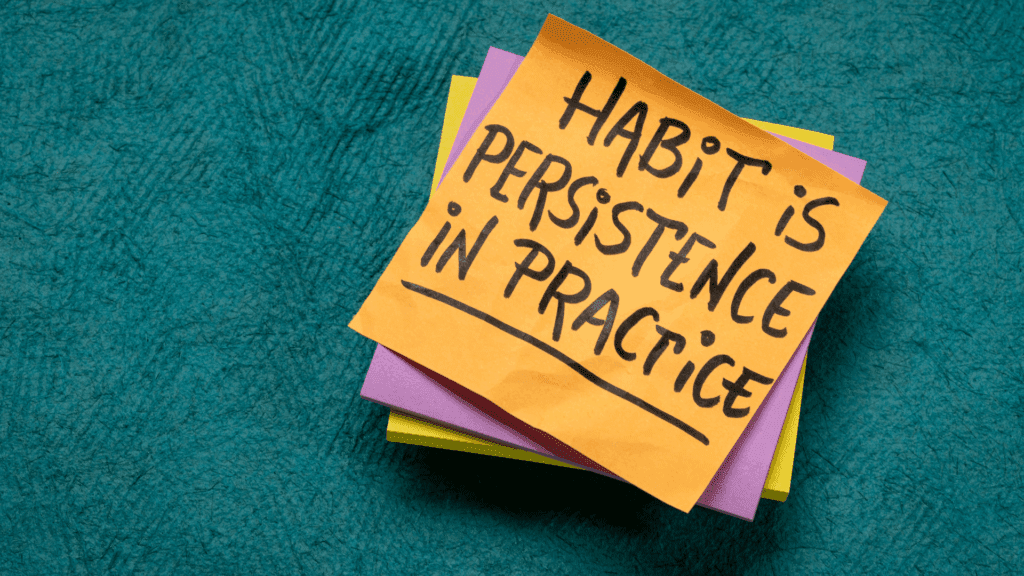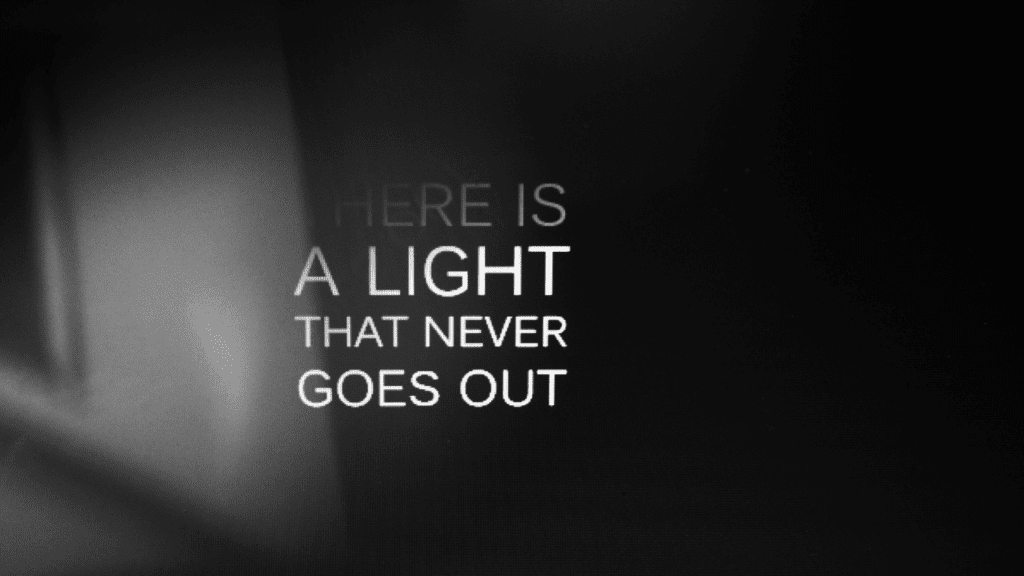Ground Truth: What Sexual Compulsivity Actually Is
Sexual compulsivity describes persistent, repetitive sexual urges or behaviors that feel intrusive, escalate over time, and continue despite negative impact on health, work, or relationships. The defining feature is impaired control. Preoccupation builds, tension rises, the behavior follows, relief arrives briefly, and the cycle restarts. This is different from a healthy, high libido, which remains flexible, context-sensitive, and value-aligned. Sexual compulsivity feels driven rather than chosen. In high performers, this pattern often hides behind secrecy and rationalization. Once we map it in brain terms, learning, attention, state regulation, shame can be replaced with skill, and choice returns.
High Drive Versus Sexual Compulsivity: The Real Difference
High drive is responsive to context, connection, and values. Sexual compulsivity remains narrow, urgent, and detached from those anchors. The difference is not frequency; it is flexibility. If you can pause, redirect, or stop without distress, that is high drive. If stopping feels non-negotiable despite harm, that is sexual compulsivity. A practical test is agency: do you feel you are choosing the behavior, or does it feel like it is choosing you. Another test is congruence: does the behavior align with your stated values and agreements most of the time.
A third test is cost: are you sacrificing sleep, work quality, money, or trust to sustain the pattern. High drive can thrive within healthy, clearly consented contexts; sexual compulsivity commonly erodes those contexts and pushes you to secrecy. When in doubt, track one week of urges and outcomes—flexible patterns show variability and choice points, while compulsive patterns look rigid and rule you from the shadows.

The Habit Loop Underneath Sexual Compulsivity
Most entrenched behaviors run on a loop: cue, routine, relief, regret. Cues include stress, loneliness, boredom, conflict, or a simple opportunity. The routine is the sexual behavior. Relief is short-term tension reduction. Regret is the cost. The brain links cue to relief and tightens the loop with repetition. Mapping your specific loop makes it targetable.
Micro-cues also matter—certain rooms, apps, songs, or times of day can prime the behavior before you consciously notice. Strong loops often concentrate in “edge hours,” such as late nights, travel days, and post-conflict windows when self-control is naturally lower. Precision helps: add friction to those windows, install a five-minute state switch before you open a browser, and move devices out of the bedroom. Use simple if–then rules—“If I feel the urge after 20 minutes, then I will take a shower, drink tea, and review tomorrow’s first task”—so your next move is already decided when the cue appears.
Why Novelty Is So Powerful In A Sexual Context
Human attention is biased toward novelty. In mating contexts, novel cues briefly amplify arousal and pursuit. Today’s digital environment supplies infinite novelty on demand, training the brain to expect instant variety. When novelty combines with privacy, sexual compulsivity accelerates, prioritizing quick hits over reflection. The brain begins to anticipate reward from “the next new thing,” which shifts motivation away from connection and toward stimulus-chasing.
Anticipatory excitement becomes the reward itself, so the pursuit continues even when satisfaction is fleeting. Repeated micro-bursts of novelty also reduce sensitivity to familiar partners, creating a false sense that intimacy requires constant escalation. In practice, novelty can be redirected by pacing exposure, choosing intentional content windows, and pairing sexual arousal with care, clarity, and aftercare rather than secrecy.
If novelty is a driver for you, plan “novelty fasts” during key hours and replace the chase with engaging, nonsexual exploration—music discovery, cuisine, or creative projects—so your brain relearns that surprise can feel good without pulling you into sexual compulsivity.
Digital Accelerants In The Modern Environment
Phones collapse cue, behavior, and reward into seconds. Infinite scroll, recommendations, and private tabs remove natural stopping points. For vulnerable brains, this is jet fuel for sexual compulsivity. The goal is not demonizing technology; it is installing guardrails—friction at night, device zoning, and scheduled resets—to protect sleep and restore reflection.
Variable reward schedules inside platforms increase compulsion by making the “next swipe” feel potentially special. Nighttime use is especially risky because self-control systems are fatigued and sleep pressure is rising. Design decisions beat willpower: remove private browsing on work devices, set content timers after 11:00, and place chargers outside the bedroom. Hide recommendations, switch the phone to grayscale, and pre-download long-form content so you are not surfing for hits. Build a “travel mode” with locked app limits before you leave home; that pre-commitment maintains choice when the context changes.

Desire Becomes Drive: How Learning Locks In A Loop
The reward system teaches the brain what to pursue. With sexual compulsivity, learning becomes “sticky,” especially when cues are fast and private. Anticipatory spikes capture attention before the behavior happens, narrowing focus and making action feel urgent. Over time, cues—images, messages, locations, time-of-day—gain magnetic power. Two forces intensify the loop. Sensitization makes cues louder. Tolerance drives a chase for greater novelty, frequency, or risk. Desire becomes automated drive.
Case Snapshots From High Performers
A financier binged late at night, missing early training and compounding anxiety. We built a pressure-release routine right after market close, protected a sleep window, and moved devices out of the bedroom. Within two weeks, urges dropped during peak risk hours; within six weeks, consistency returned. A founder used sexual content as self-soothing after cofounder conflict. We added a five-minute reset ritual post-meeting, installed blockers on work devices, and practiced a short urge-delay protocol that redirected attention for ten minutes before any decision.
As conflict skills improved and check-ins became routine, acting-out episodes declined, and the founder reported steadier focus and better sleep. A consultant on heavy travel preloaded “travel mode” limits and scheduled one nightly accountability text; the combination cut hotel-night escalations by half within a month. Across cases, the wins came from precision—designing the edge hours, adding tiny frictions, and protecting sleep—rather than from sweeping bans. Trackable, repeated behaviors did the repair work that speeches could not.
How Threat Learning Wires Arousal: Trauma’s Imprint On The Sexual Brain
Trauma calibrates the nervous system toward survival. Hypervigilance raises baseline arousal; relief learning prioritizes whatever changes state fastest; avoidance learning limits safe intimacy practice. Sexual stimulation, being a rapid state shifter, becomes a preferred escape. When stress or isolation rises, sexual compulsivity activates.
Once you identify which sensations and contexts echo past danger, you can introduce matched counter-signals of safety—predictable routines, sensory grounding, and precise boundaries—so arousal no longer equals alarm.

Attachment Patterns And The Intimacy Avoidance Paradox
Attachment is the brain’s template for closeness. If closeness once meant inconsistency or pain, the brain craves bonding while anticipating threat. Many then simulate connection through intensity and secrecy, not sustained intimacy. The chase feels alive; the aftermath feels distant.
The antidote is safe exposure to being seen without performance. Small interactions that end predictably well increase tolerance for closeness. As safety accrues, the nervous system allows intimacy without flipping into fight, flight, or freeze, softening sexual compulsivity.
Fear Of Vulnerability: Why The Mask Can Feel Necessary
If need-showing was punished or ignored, the brain equates openness with risk. Sex without vulnerability can feel safer because it avoids requests, feedback, and potential rejection. That safety is costly; it blocks corrective experiences of being accepted while imperfect.
Rebuild by separating disclosure from dumping. Share one truth at a time, with timing and purpose. Measured openness creates new memory traces—“I was real and I was safe”—which lowers urgency to hide behind sexual compulsivity.
Early Signals Across Life Stages And Identities
This pattern can appear in any gender, orientation, or age. In teens and young adults, it often looks like escalating online behavior that crowds out sleep and connection. In partnered people, it may involve hidden messaging or late-night sessions that erode trust. In older adults, it may co-occur with loneliness or identity shifts after career changes. The common thread is compulsion and cost, not any one identity.
Signals also surface differently by life structure. Students may notice slipping grades and morning fatigue; new parents may lean on screens during exhaustion spikes; remote workers may drift into afternoon spirals as boundaries blur. Retirees can be vulnerable when structure and roles change abruptly. People reentering dating after a long gap may rely on novelty to soothe anxiety instead of building gradual connection. Protective factors include predictable routines, clear device boundaries, and at least one weekly plan that feeds purpose outside sexuality, which weakens sexual compulsivity across stages.

A Non-Diagnostic Self Check-In For Sexual Compulsivity
Ask yourself: Do urges or behaviors feel intrusive and hard to stop. Do you need more time, novelty, or risk to get the same effect. Have work, health, finances, or relationships suffered. Do you hide the pattern or make vows without follow-through. Do you feel irritable if you try to cut back. If you answer “yes” to several, sexual compulsivity may be part of your current pattern; this is not a diagnosis but a mirror to guide next steps.
Turn reflection into data. Track two weeks of triggers, timing, device context, and sleep to clarify patterns. Note which small interventions help—earlier wind-down, a five-minute state switch, or keeping the phone outside the bedroom. Share one specific finding with a trusted person to reduce secrecy and increase accountability. Sort contexts into green (safe), yellow (needs support), and red (off-limits for now) so your choices are clear when urges rise.
Case Snapshots From High Performers With Sexual Compulsivity
A financier binged late at night, missing early training and compounding anxiety. We built a pressure-release routine after market close, protected a sleep window, and moved devices out of the bedroom. Within two weeks, urges dropped during peak risk hours; within six weeks, consistency returned. A founder used sexual content to self-soothe after cofounder conflict. We added a five-minute reset ritual post-meeting, installed blockers on work devices, and practiced a short urge-delay protocol that redirected attention for ten minutes before any decision.
As conflict skills improved and check-ins became routine, acting-out episodes declined, and the founder reported steadier focus and better sleep. A consultant on heavy travel preloaded “travel mode” limits, requested hotel rooms without TVs, and set one nightly accountability text; escalations on hotel nights fell by half within a month. A creative lead replaced late-night scrolling with a fixed “closing ritual” at 9:45 and a morning light walk at 7:30, which stabilized circadian rhythm and reduced evening urges. Across cases, targeted friction, sleep protection, and predictable support did the repair work speeches could not, steadily weakening sexual compulsivity.
Scripts That Lower Defensiveness And Increase Clarity
Clear language prevents spirals. Scripts work because they slow the nervous system, reduce guesswork, and bring the frontal systems that support choice back online when sexual compulsivity starts to pull you off plan. Keep scripts short, specific, and time stamped so everyone knows what happens next.
Use a three-part format: state your current condition, state the boundary, state the next step with a time to reengage. Practice out loud once a day so the words surface automatically during edge hours when sexual compulsivity tends to accelerate.
To a partner: I feel activated. I will take a 20 minute reset and revisit this at 6:00 pm. To yourself: I am having a strong urge. I will run my five minute state switch, check my plan, and text my accountability partner if needed. To a colleague when work stress is a cue: I need ten minutes to reset and will deliver the brief by 3:00 pm.
Add context specific versions so you are never improvising when sexual compulsivity is loud. Late night script: It is after 10:00 pm and I feel pulled to scroll. I am plugging my phone in outside the bedroom and reading for ten minutes before lights out. Travel night script: I am alone in a hotel and noticing urges. I will text my check in, turn on the app limit, and schedule a morning call.
Post conflict script: My body is hot and my thinking is narrow. I will walk for ten minutes, drink water, and then propose one small repair at 7:30 pm. Lapse script: I slipped. I am turning off the device, noting the cue and my state, and making one adjustment in my plan right now. These scripts are scaffolding that protect relationships and restore authorship while you retrain responses and reduce the leverage of sexual compulsivity.

Values, Consent, And Boundaries That Actually Hold
Strong boundaries are specific, observable, and time bound. Examples: No phone in the bedroom after 10:00 pm. No private browsing on work devices. No alcohol when traveling alone. One weekly review of guardrails every Friday at 12:00 pm with proof of settings. Consent should be equally explicit: enthusiastic yes before contact, clear stop rules, and aftercare that includes a next day check in.
When standards are concrete, sexual compulsivity has fewer places to hide because ambiguity is removed in advance. Post your top five boundaries where you will see them at night and tie each to a visible action so there is proof, not just intention. If a boundary is broken, adjust the environment first, since environmental friction is one of the most reliable ways to weaken sexual compulsivity. Treat each upheld boundary as a data point that your nervous system can trust structure over urgency, which directly reduces sexual compulsivity in your highest risk hours.
Build a simple consent and boundary architecture for common contexts where sexual compulsivity tends to spike. Home evenings: chargers live outside the bedroom, media shuts down at 9:30 pm, and a five minute state switch precedes any choice so sexual compulsivity does not get a head start.
Travel: app limits are locked before departure, room selection avoids in room temptations when possible, and one nightly accountability text is nonnegotiable to keep sexual compulsivity from using isolation as leverage. Social events: one drink maximum when alone, a preplanned ride home, and a check in message at arrival and departure so sexual compulsivity does not slip in when decision fatigue is high.
Partner intimacy: a brief pre check for a clear yes, a pre agreed stop word, and a next day touch point to debrief and care for the bond, which keeps sexual compulsivity from replacing connection with secrecy. Audit boundaries weekly with three questions: Did I keep it, if not what cue beat it, and what tiny change makes it easier this week; this keeps sexual compulsivity measurable and manageable.
Precision With Triggers, Not Blanket Bans
Blanket bans often fail without skills, especially when dealing with sexual compulsivity. Focus on the hours and contexts where sexual compulsivity is strongest: late nights, travel, and post conflict windows. Design those with structure and leave other hours open but intentional. This respects autonomy while breaking the pattern that concentrates power. Precision is freedom, because it lets you keep what is healthy while isolating what is harmful.
Most people discover that a few narrow contexts cause most of the damage, so you win by engineering those choke points rather than policing your entire life. Precision also prevents backlash, which is common when sexual compulsivity meets unrealistic rules and then uses one slip to justify a spiral.
Create visible “tripwires” in those moments, such as automatic WiFi shutoff, prearranged check ins, or moving the phone out of reach, so the environment helps you stop. Decide in advance what you will do in the first five minutes after a known trigger, because the first five minutes decide the next five hours and often decide whether sexual compulsivity gains momentum. Pair each tripwire with a short state switch so your body calms before any digital choice, which directly weakens sexual compulsivity’s grip on attention.
Keep a written “edge hour” plan on your nightstand and in your travel bag so precision is portable. Treat every precise boundary as a vote for the future you are building, not a punishment for the present you are leaving, and notice how sexual compulsivity loses leverage when your next move is already chosen.

Identity, Not Just Inhibition
White knuckling burns energy. Identity change releases it. Replace the self story of “someone who struggles with sexual compulsivity” with “someone who protects attention and builds connection.” Write a short identity statement and read it each morning. Identity predicts behavior more reliably than fear. When you act from identity, you stop negotiating with urges and start keeping promises to yourself, which steadily reduces the space sexual compulsivity needs to operate. Identity based choices also make slip ups less dangerous, because a single moment does not define the person you are becoming.
Align your spaces with your story, because your room, your phone layout, and your nighttime ritual should all say the same thing about who you are. Write one paragraph from your future self describing how it feels to live with integrity and revisit it when the urge rises, especially when sexual compulsivity tries to sell you speed over sincerity. Let small, repeatable actions become your proof, since a hundred quiet wins will shift a self concept more than one dramatic declaration.
Track those wins where you can see them so your brain links evidence of agency with evenings and travel nights, the very contexts where sexual compulsivity once felt inevitable. Over time, the sentence “I am the person who protects attention and builds connection” becomes true in practice, and sexual compulsivity fades as a mismatched identity.
Protecting Partners While You Rebuild Trust
Secrecy is often more damaging than behavior. Share enough detail to be honest without flooding. Offer a clear plan, specific updates, and concrete boundaries. Invite limits your partner needs for safety. Repair is consistent action over time. Transparency should be verifiable, which means your safeguards can be demonstrated, not just described.
Schedule brief, regular check-ins so reassurance is predictable and does not require constant crisis. Lead with empathy before information, because nervous systems hear care more clearly than data. Let your partner set the pace of disclosure so safety is co-authored rather than forced.
The Role Of Physiology
Stable blood sugar, movement, and morning light make urges less volatile. Protein at regular intervals, even brief exercise, and daylight exposure improve mood regulation and decision quality. These base layers make other skills easier to use. Think of circadian rhythm as your daily operating system, because when sleep and light are steady, cravings lose leverage.
Time caffeine earlier in the day, limit alcohol on solo nights, and take short movement breaks every 90 minutes to reset state. Hydration and balanced meals are not trivial, they are levers that stabilize the brain’s threshold for impulse. A consistent morning routine is a daily vote for clarity, and even ten minutes can tilt the whole day. When your body is predictable, your decisions become simpler.
Handling Lapses Without Collapse
A lapse is data, not doom. Ask three questions: What was the cue, what was my state, what will I change next time. Then implement the smallest adjustment that would have blocked the loop. Quick learning encodes recovery rather than failure. Measure recovery time as a key metric, because getting back on plan faster is a real form of progress. Name the difference between a lapse and a relapse, since one moment does not define your identity unless you let it multiply.
Do a 24-hour pre-mortem after a stumble and plan the riskiest windows before they arrive. Change your environment within five minutes of a lapse, because new surroundings make new choices easier. Call one trusted person and state the next concrete action so accountability replaces rumination.
A 7 Day Reset You Can Start Now
- Day 1: Map your hotspots and pick two device speed bumps.
- Day 2: Move chargers out of the bedroom and set a shutdown alarm.
- Day 3: Choose a five-minute state switch and practice it twice.
- Day 4: Add a fast, healthy replacement reward after work.
- Day 5: Share your plan with a trusted person and schedule a check in.
- Day 6: Review your log. Note wins and one small change for next week.
- Day 7: Do a long walk, reflect on values, and write your identity statement.
This reset is not a cure, but it breaks momentum. Most people notice that sexual compulsivity feels less urgent once sleep improves, triggers are mapped, and small wins pile up.

Your Next Choice Becomes Your New Story
You have already proven you can map triggers, install friction, and design safer hours. The next step is authorship. Sexual compulsivity is not a character flaw, it is a trainable pattern, and patterns yield to repetition, measurement, and identity-level commitments. Your nervous system learns from whatever you do most often, so give it a steady diet of clarity, sleep, and honest connection. Treat each micro win as evidence that your brain adapts to the signals you send. Replace moral judgment with meticulous design, because a well-designed day outperforms a willpower day.
Choose three nonnegotiables and defend them with the same rigor you give to your most important work. Protect sleep with a consistent shutdown and a phone that sleeps elsewhere. Run your five-minute state switch before you make any choice during edge hours. Keep one accountability touchpoint each week so secrecy never has time to rebuild. Read your identity statement every morning and let your spaces, schedules, and conversations echo that identity.
Build a life that keeps you too engaged to be captured by the old loop. Funnel your novelty drive into skills, service, and relationships that return energy instead of draining it. Let your partner or a trusted ally see your plan and your progress so repair happens in the open. Track recovery time after setbacks and celebrate how quickly you return to plan, because resilience is the metric that predicts lasting change. When the day is designed around who you are becoming, sexual compulsivity stops feeling inevitable and starts feeling optional.
Begin now, not perfectly but precisely. Pick the one move that would make the next urge easier to handle and do that before the urge arrives. Show your brain that safety, clarity, and connection are available without secrecy. Then repeat until your nervous system believes you. Your next choice is small, and it is also the beginning of a very different story.
1) What exactly is sexual compulsivity, and how is it different from a high libido?
Sexual compulsivity is a persistent pattern of urges and behaviors that feel intrusive, escalate over time, and continue despite negative impact on health, work, or relationships. The core issue is impaired control, not desire itself. A high libido remains flexible and value aligned. It can pause, redirect, or stop without distress. Sexual compulsivity feels urgent, narrow, and disconnected from your stated goals, and it tends to run on secrecy and repetition rather than choice.
2) How do I know if sexual compulsivity is part of my current pattern?
I ask clients to review five signals. Do urges feel intrusive and hard to stop. Do you need more time, novelty, or risk to get the same effect. Have work, health, finances, or relationships suffered. Do you hide the behavior or make promises without follow through. Do you feel restless or irritable when you try to cut back. If several answers are yes, sexual compulsivity may be present. This is not a diagnosis. It is a mirror that helps us target the right levers for change.
3) How do you treat clients with sexual compulsivity in your practice?
My method is a structured, neuroscience based coaching process that focuses on design, not shame. We start by mapping hotspots by hour, location, device context, and emotion so the pattern becomes visible and predictable. We stabilize physiology first because sleep, light, nutrition, and brief movement reduce reactivity. We then install friction at edge hours with app limits, device zoning, and small delays that restore space for choice. I teach a five minute state switch that changes your body state before you make any digital choice. We redirect novelty into nonsexual exploration so the brain’s search system feels satisfied without pulling you back into sexual compulsivity. If you have a partner, we create short repair rituals and verifiable guardrails that rebuild trust without flooding either person.
4) Why does your method work when other attempts have not?
Because we treat sexual compulsivity as a trainable brain pattern that responds to repetition and measurement. We do not rely on white knuckling. We design the day so the easiest action is the right one. We focus on small, repeatable wins that change identity from the inside out. We make progress measurable through two leading indicators: shorter recovery time after lapses and fewer episodes in the same high risk windows. When identity, environment, and physiology all point in the same direction, your nervous system stops fighting you and starts helping you.
5) How long before I notice results, and what does progress look like?
Most clients notice early gains within two weeks once sleep is protected and edge hour friction is in place. The first signs are fewer late night spirals, faster recovery after a stumble, and more mornings with clear focus. Over six to eight weeks, urges feel less loud in the windows we designed. Over three to six months, people report stronger alignment with values, better relationship communication, and a life that is simply too full to support sexual compulsivity. We track progress in a simple table with date, sleep hours, trigger context, action taken, and outcome so improvement is visible.
6) Do I need to quit all sexual activity to change this pattern?
Not necessarily. Many clients regain control by targeting the riskiest 20 percent of contexts first. We design late nights, travel nights, and post conflict windows with structure, and we keep other hours open but intentional. As control returns, healthy, chosen intimacy becomes easier. The aim is not purity. The aim is authorship, where your choices match your values and relationships.
7) How do you help my partner and rebuild trust if secrecy has caused damage?
Secrecy often hurts more than the behavior. We introduce short, predictable check ins that include proof of safeguards rather than vague assurances. We agree on specific boundaries like no phone in the bedroom after a set time and one weekly guardrail review. We add empathy first, information second, so both nervous systems read safety. You share enough detail to be honest without flooding. Repair is repetition over time, and trust grows as promises become observable habits that do not slip when stress rises or when you travel.
8) What if trauma, shame, or fear of vulnerability is driving the behavior?
Then we address those drivers directly and gently. Trauma can make arousal feel like a fast escape from discomfort, so we install matched safety signals through routine, grounding, and predictable contact with safe people. Shame fuels isolation, so we shift language from global condemnation to accurate description. Fear of vulnerability is handled with a simple ladder of micro disclosures that prove openness can be safe. As safety increases, sexual compulsivity loses the stress and secrecy it depends on.
9) What happens when I lapse, and how do we prevent a collapse?
A lapse is data, not doom. We ask three questions within minutes. What was the cue. What was my state. What will I change next time. We implement the smallest adjustment that would have blocked the loop, such as earlier wind down or moving the charger. We track recovery time as a key metric. Fast returns to plan show the system is stronger. This keeps identity intact and prevents the one moment from multiplying into a bad week.
10) How do you maintain privacy and discretion for high profile or time pressed clients?
I design a plan that fits your calendar and your public role. We use discreet tech changes, short daily rituals, and weekly reviews that take minutes, not hours. Proof of safeguards is private and portable. You get travel mode settings before you leave, and you have a simple script for late nights and post event decompression. Everything is measurable, quiet, and aligned with the image you want to protect, while still reducing the leverage that sexual compulsivity holds over your schedule and attention.
#SexualCompulsivity #Neuroscience #BrainHealth #ImpulseControl #Dopamine #ExecutiveFunction #RelationshipHealth #BehaviorChange #HighPerformance #WellBeing




